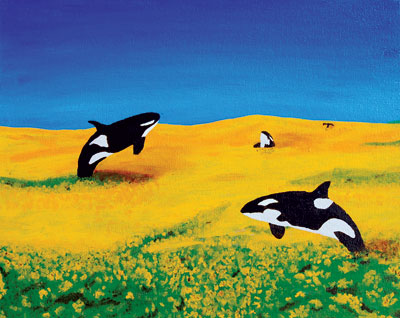All Nonfiction
- Bullying
- Books
- Academic
- Author Interviews
- Celebrity interviews
- College Articles
- College Essays
- Educator of the Year
- Heroes
- Interviews
- Memoir
- Personal Experience
- Sports
- Travel & Culture
All Opinions
- Bullying
- Current Events / Politics
- Discrimination
- Drugs / Alcohol / Smoking
- Entertainment / Celebrities
- Environment
- Love / Relationships
- Movies / Music / TV
- Pop Culture / Trends
- School / College
- Social Issues / Civics
- Spirituality / Religion
- Sports / Hobbies
All Hot Topics
- Bullying
- Community Service
- Environment
- Health
- Letters to the Editor
- Pride & Prejudice
- What Matters
- Back
Summer Guide
- Program Links
- Program Reviews
- Back
College Guide
- College Links
- College Reviews
- College Essays
- College Articles
- Back
Marine Parks: Conservation or Entertainment?
For decades, animals have been the major attraction in theme parks. It wasn’t until 2013 when Blackfish, a documentary exposing the treatment of cetaceans through the life of Tilikum a captured orca, challenged marine park attendees. Is it right to capture orcas for the sake of entertainment and possibly education and conservation? To an audience unaware of the lifestyles of cetaceans, it is.
Marine parks present a facade of false information to an oblivious audience. Research on captured cetaceans outweighs any benefits overwhelmingly.
Animals are taken from their natural habitat and are put in enclosures that do not serve them well in any way. In addition, the method marine parks used to capture orcas is inhumane. Blackfish interviewed a former SeaWorld orca hunter reflecting on the job as equivalent to kidnapping. Orca hunters would specifically target younger orcas.
The sad part is not all orca hunts were successful. Around twelve young orcas died in the process of being captured. Orca hunters did nothing but fill the deceased orcas with rocks and sink them to the bottom of the ocean. The living orcas still crying for help don’t realize they will never return home.
Once orcas are moved to their new, unnatural, environment they begin to show major signs of deteriorating health, such as dorsal fin collapse and violent social interactions with other orcas and/or trainers.
Dorsal fin collapse is caused by warmer temperatures, lack of distance orcas travel, and diet. Although marine parks normalize dorsal fin collapse, researchers say “the fin tissue gets less support than it would if the orca were in the wild.” The pressure from the water builds muscles in the dorsal fin. With an enclosure as small as 40 feet deep and 350 feet long(0.07 miles), orcas can hardly meet the average 100 miles per day. The warm temperatures, caused by the amount of time spent at the surface, dehydrates the dorsal fin tissue, causing the fin to collapse. With these factors, a diet of thawed fish, is hardly sufficient protein to strengthen the tissue of the dorsal fin.
There are several incidents when orcas would violently interact with other orcas and their trainers. In the wild, orcas are social creatures among their kin. Marine parks failed to acknowledge that orcas interact more intimately with their families compared to their entire species. Because the orcas in the enclosure have no relation, they violently compete for dominance by scratching and biting each other. There are also records of orcas killing trainers as a sign of frustration. For instance, a former SeaWorld trainer, Dawn Brancheau, was rubbing Tilikum, a former captured orca, as part of post-show routine. Suddenly Tilikum grabbed Brancheau by the ponytail and drowned her, showing obvious signs of agitation.
Some may argue for a larger enclosure to prevent orcas from behaving so unnaturally. However, the environment alone decreases orcas’ average lifespan of 45-50 years down to 6-7 years.
The truth is orcas are going to act unnaturally in an unnatural environment. Attending animal themed parks display apathy towards the conditions animals are forced in. Until park owners realize how ruthless their actions are, attendees need to boycott these parks. Exploiting animals for the sake of profit and power is not our duty as humans. Normalizing the abuse of animals will raise another generation filled with ignorance, seeing as children are theme parks’ largest audience. It’s our duty as people who see between the lines to not contribute in the exploitation of animals. Boycott these parks. Better yet, tell your friends and their friends to boycott.

Similar Articles
JOIN THE DISCUSSION
This article has 0 comments.
